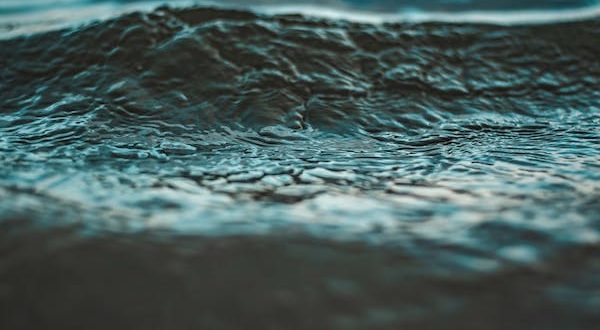In the realm of environmental protection, contaminated water lawsuits shine as a potent force for driving transformative regulatory reforms. As incidents of water contamination continue to impact communities, these legal battles serve as a powerful tool in catalyzing change.
Contaminated water lawsuits are not merely isolated legal disputes. They are integral to a broader narrative of accountability, transparency, and the pursuit of more robust regulatory frameworks.
This exploration delves into the pivotal role that contaminated water lawsuits play in igniting regulatory reforms.
The History of Contaminated Water Lawsuits
The history of contaminated water lawsuits is a long and complex one. The first major lawsuit involving contaminated water was the Love Canal case, which was filed in 1978.
The Love Canal case involved a community in New York that was built on top of a former chemical dump. The dump had been filled with toxic chemicals, and as a result, the residents of Love Canal were exposed to high levels of these chemicals. The lawsuit resulted in a settlement of $98 million, and it led to the cleanup of the Love Canal site.
In the years since the Love Canal case, there have been many other contaminated water lawsuits. Some of the most notable cases include the Hinkley lawsuit, the Parkersburg lawsuit, and the Camp Lejeune lawsuit. These lawsuits have helped to raise awareness of the problem of contaminated water, and they have also led to regulatory reforms.
The history of contaminated water lawsuits is a story of progress. As more and more people have become aware of the problem, the courts have become more willing to hold polluters accountable. This has led to several significant regulatory reforms, which have helped to protect public health.
However, the fight for clean water is not over. There are still many contaminated water sites in the United States, and there are still many people who are being exposed to toxic chemicals.
In a recent survey, USGS researchers examined water samples drawn directly from household kitchen sinks across the nation. This comprehensive study represents a groundbreaking assessment of PFAS levels in both privately owned well water and public water supplies.
The findings indicate that a minimum of one type of monitored PFAS compound may be detectable in nearly 50% of U.S. tap water. Notably, the concentrations of PFAS compounds were found to be comparable between water supplies from public sources and those from private wells.
With this level of exposure, contaminated water lawsuits will continue to play a role in driving change. They will also help to ensure that our drinking water is safe for future generations.
The Impact of Contaminated Water Lawsuits on Regulation
One of the most important impacts of contaminated water lawsuits has been the development of new regulations. For example, in direct response to the Love Canal incident, the Comprehensive Environmental Response, Compensation, and Liability Act (CERCLA) was passed.
Commonly referred to as the federal Superfund law, it was enacted by Congress on December 11, 1980.
In the present day, the Environmental Protection Agency (EPA) persistently works to guarantee the safety of the Love Canal site. The agency aims to eliminate any potential toxic threats to the local community.
Contaminated water lawsuits have also led to changes in the way that regulatory agencies enforce the law. For example, the EPA has become more aggressive in enforcing the Safe Drinking Water Act (SDWA) in recent years. This is due in part to the threat of lawsuits from environmental groups and individuals who have been harmed by contaminated water.
In recent years, the most notable example of the impact of contaminated water lawsuits on regulation is the Camp Lejeune Justice Act of 2022. This law allows military personnel and their families exposed to contaminated water at Camp Lejeune to sue for damages.
The law was passed in response to the many lawsuits that had been filed by victims of the contamination.
TorHoerman Law notes that the United States House of Representatives has recently approved the act, marking a notable milestone. The act holds special significance because the federal government usually enjoys immunity from legal claims made by military personnel in the context of their service.
The Challenges of Regulatory Reform
Regulatory reform is often a difficult and time-consuming process. Several challenges can make regulatory reform difficult, including:
- Opposition from industry interests: Industry interests often oppose regulatory reform because they believe that it will increase their costs. They may lobby against regulatory reform or file lawsuits to challenge new regulations.
- Lack of public support: Regulatory reform can also be difficult if there is not strong public support for it. This is because regulatory reform can sometimes lead to higher prices or other inconveniences for consumers.
- Technical complexity: Regulatory reform can also be difficult because it often involves complex technical issues. This can make it difficult for policymakers to understand the potential impacts of regulatory reform and to develop effective regulations.
- Political will: Regulatory reform also requires political will. This means that there needs to be a consensus among policymakers that regulatory reform is necessary and that it is worth the effort.
The Guardian reports that the actions of the Trump administration concerning the federal government’s responsibility in safeguarding the water bodies have sparked ongoing debate.
The administration opted for a tightly defined approach, resulting in limited oversight over pollution in wetlands and temporary streams. Additionally, critics argue that the response to ensuring the safety of Americans’ drinking water, particularly in the aftermath of the Flint water crisis, was perceived as inadequate.
Despite these challenges, regulatory reform is possible. However, it is essential to be aware of the challenges involved and to develop strategies to overcome them.
Conclusion
The path ahead for improving rules around contaminated water safety shows promise for better health and a cleaner environment. We’re witnessing a blend of legal steps, new scientific findings, and increased concern from the public. These factors are driving us to create stronger guidelines and take more measures to safeguard our well-being and nature.
Through learning from instances of water pollution, we’re making adjustments to prevent similar issues down the line. While there are obstacles, like understanding complex science and balancing various interests, experts, scientists, and concerned individuals are collaborating.
The objective is clear: to ensure clean and safe water for everyone. The changes we’re enacting now mark a significant stride towards achieving this crucial goal.
 Naa Songs
Naa Songs





